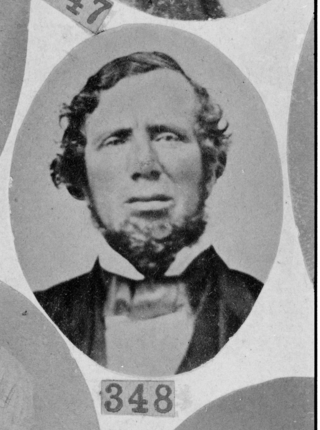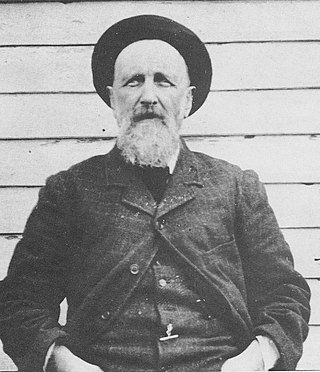Related Research Articles

Ballarat is a city in the Central Highlands of Victoria, Australia. At the 2021 Census, Ballarat had a population of 116,201, making it the third largest city in Victoria.

Kingston is a small town in rural Shire of Hepburn in Victoria, Australia. Kingston is located about 15 km from Creswick, just off the Midland Highway and is about 20 km from Daylesford. Kingston's post code is 3364. At the 2016 census, Kingston had a population of 177.

Creswick is a town in west-central Victoria, Australia, 18 kilometres north of Ballarat and 122 kilometres northwest of Melbourne, in the Shire of Hepburn. It is 430 metres above sea level. At the 2016 census, Creswick had a population of 3,170. Creswick was named after the Creswick family, the pioneer settlers of the region.

Lethbridge is a rural township outside Geelong, Victoria, Australia. Bluestone from Lethbridge quarries was used to build several significant buildings in Melbourne, including the steps to the Parliament House. At the 2016 census, Lethbridge had a population of 1,014.

The Central Highlands subregion is part of the Grampians region in western Victoria. It includes the municipalities of Rural City of Ararat, City of Ballarat, Golden Plains Shire, Shire of Hepburn, Shire of Moorabool, Shire of Pyrenees

Dunster Working Watermill is a restored 18th century watermill, situated on the River Avill, close to Gallox Bridge, in the grounds of Dunster Castle in Dunster, Somerset, England. It is a Grade II* listed building.

The Hawthorn Bridge crosses the Yarra River, five kilometres (3.1 mi) east of Melbourne, Victoria, Australia, connecting Bridge Road and Burwood Road. It is the oldest extant bridge over the Yarra River and is one of the oldest metal bridges in Australia. It was constructed in the early wave of major new infrastructure funded by the Victorian gold rush. Designed by Francis Bell, it is a substantial riveted, wrought iron, lattice truss structure, with bluestone abutments and piers.

The Saltwater River Rail Bridge is a large steel arch truss railway bridge completed in 1858 and crossing the Maribyrnong River on the Melbourne to Footscray railway in Melbourne, Victoria. It had the longest span of any bridge in Victoria for thirty years.

Newlyn is a small, rural town in the Shire of Hepburn, in west-central Victoria, Australia. It is located 27 kilometres (17 mi) northeast of Ballarat and 124 kilometres (77 mi) northwest of Melbourne. It is 452 metres above sea level. At the 2021 census, it had a population of 136 across 57 private dwellings. It is located on the Midland Highway. Newlyn North is 2 kilometres away.

Smeaton is a rural town in the state of Victoria, Australia, near the town of Creswick. At the 2016 census, Smeaton had a population of 231.
Clement Wilks was a notable civil engineer and architect in colonial Victoria, Australia.

The Redesdale Bridge is one of the oldest iron lattice-truss bridges in Victoria, Australia. The Redesdale Bridge is a wrought iron and timber structure with bluestone abutments, located over the Campaspe River near the town of Redesdale.

Thomas Fulton (1813–1859) was an iron foundry owner in Melbourne, Australia. He established one of the earliest foundries and engineering works in Melbourne in 1842 with Robert Langlands and laid the basis for the metal industry in the colony of Victoria.

William Anderson, was a politician in colonial Victoria (Australia), member of the Victorian Legislative Assembly for Creswick, and later Windermere. He was also the fourth Chief President of the Australian Natives' Association.

The Shelford Bridge is an important early wrought iron box girder road bridge built in 1873-4 over the River Leigh and designed by Charles Anthony Corbett Wilson (1827–1923) on the main road from Melbourne to Portland in Victoria, Australia.
McMillans Bridge, is a riveted wrought iron open web truss bridge, located over the Woady Yaloak River on the Rokewood-Skipton Road between Rokewood and Werneth on a historical route between Geelong and the 1850s goldfields at Ararat and Streatham.

Pitfield Bridge, is a riveted wrought iron, Warren truss road bridge, located over the Woady Yaloak Creek on the Rokewood-Skipton Road near Pitfield in Victoria, Australia. The bridge was originally constructed in the late 1850s, by the Woady Yallock Roads Board, and modified later in the century by construction of a large riveted wrought iron truss span.
Hepburn Lagoon is a large artificial lake located between Kingston and Blampied, in Victoria, Australia.

John La Gerche was a pioneering forester on the Victorian goldfields at Creswick, Australia in the late 1800s.
References
- ↑ 'Andersons Mill - Smeaton Celebrating 150 years' Parks Victoria, Park Notes, 1 April 2012
- 1 2 3 4 5 Ballarat and District Industrial Heritage Project, Federation University
- ↑ Water wheel casting stolen from Anderson's Mill in Smeaton Julie Atkins the Advocate, 1 Apr 2014
- ↑ Smeaton Independent News, Smeaton Mill
- ↑ Creswick Advertiser April 1862
- ↑ The 22nd Annual Anderson's Mill Festival
- ↑ Victorian Heritage database ANDERSONS MILL COMPLEX
- Centenary of Smeaton, 1838-1938 : a souvenir booklet with historical sketches, Smeaton Centenary Committee, 1938, p21.
- Video 'Country flour mill stands tall after 150 years', by Margaret Burin ABC Ballarat, 30 March 2012